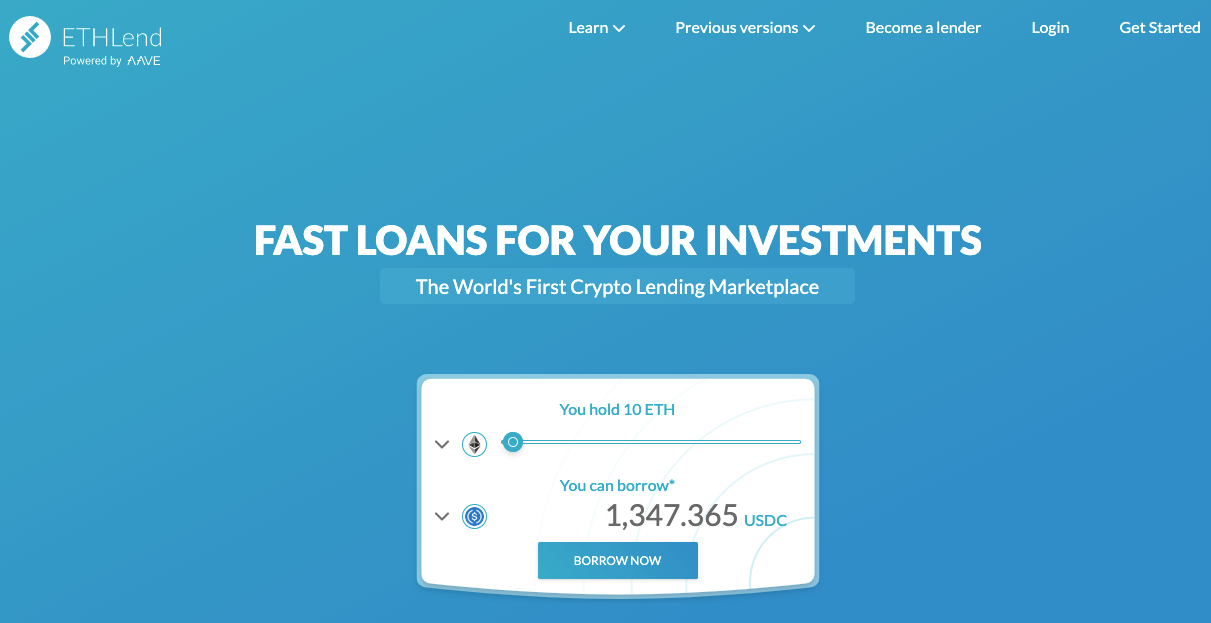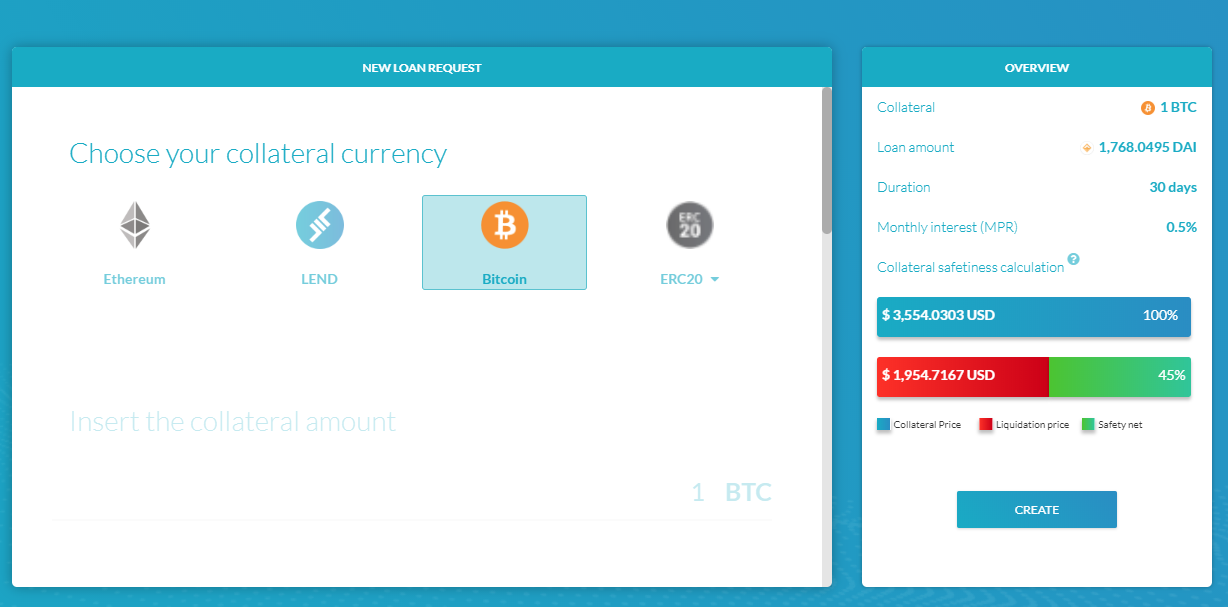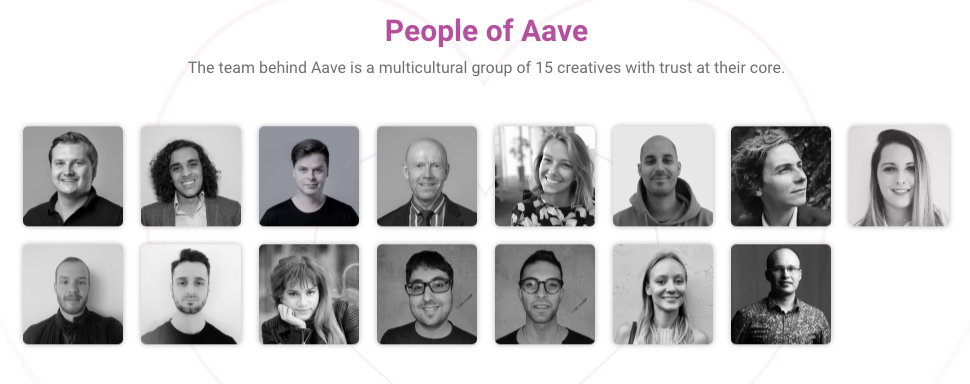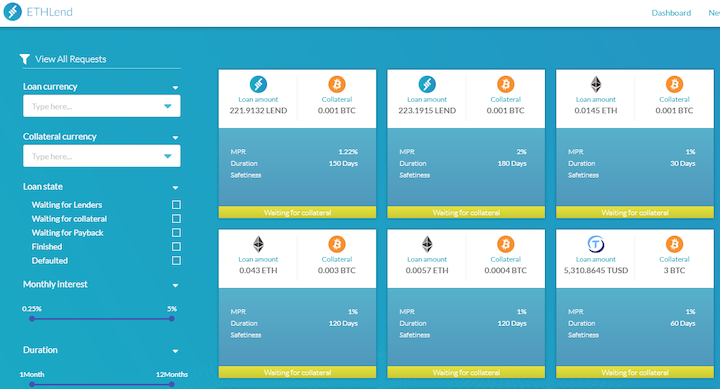Stani Kulechov talks about ETHLend, the first decentralized lending marketplace built by DeFi OGs.
Hello! What’s your background, and what are you working on?
My name is Stani Kulechov and I founded Aave, which is behind the first decentralized lending marketplace ETHLend. I have a legal background and found the Ethereum community few years ago.
ETHLend is our flagship product and the cornerstone of decentralized lending. We launched back in the beginning of 2017 and keep hearing that we are the “OGs” of DeFi. Our product allows to match lenders and borrowers to conclude collateral-based loans safely and securely. To ensure security, we are utilising trustless technology (smart contracts), hence we do not hold the users funds and their collaterals are stored in these pre-programmed smart contracts. In the current market, ETHLend provides the most decentralized environment for loan transactions. It is part of our identity.

Our user base consists of two groups. We have traders who are borrowing to leverage or short various assets or businesses or consumers who need funds for spending and do not want to sell their collateral assets in the current market conditions. They take out a loan from a decentralized marketplace and cash the funds to FIAT. Since loans tend to be long-term transactions, users feel more secure when they use DeFi mitigating the need to trust the service provider.

What’s ETHLend backstory?
I was fascinated by the possibilities that Smart Contracts create within the legal use-cases. Eventually, when starting mapping out the use-cases, I found more unleashed potential in financial services and hence focus on lending. One of the most important part that kept my interest in Ethereum was the community, which has grown even more following the DeFi culture.
The Ethereum community eventually helped us to validate our model and the technical aspects that relate to smart contracts. Once we saw more market participants and users entering into the decentralized lending space, we were sure that our proof-of-concept model has become a success. Most valuable validation and feedback from the community has been towards our integrity of keeping things as decentralized as possible and improving the user experience, which was quite hash couple of years ago for all decentralized applications.
Funding was quite difficult in the beginning given that our startup had its roots in Finland, which is a bit further away from the VC scenes. Eventually we decided to raise funds via token generation event by issuing LEND token, which is used for different utilities in the marketplace such as fee reduction. Currently, we are evaluating how to introduce governance for ETHLend and other products of Aave with the use of our token.

Our team is quite compact consisting of 18 individuals with different backgrounds. Most of the team members are participating in the development including myself and we have a really excellent soft skills department that is working hard to message DeFi and trying to expand our audience and the whole DeFi space. Together we have built DeFi for the past few years and gained much of experience. We are hoping to be able to provide more dev tools for the community in the future.
The motivation for building ETHLend in the first place was to experience whether a trustless lending system could work. Hence we researched on different ways to create trustless transactions and ended up creating the over-collateralized loan transactions. Today there are multiple DeFi projects extending our innovation and we are quite happy to the progress.
What went into building the ETHLend?
Building ETHLend has been quite a journey. Plenty of resources has been going into the development especially within the first year since the technology that we have used was quite new. The most intriguing part of solidity development is that there might not be any answers online and we would need to brainstorm the issue within the team to solve the issues. Such circumstances has given extensive knowledge to our team and we are quite blessed to have such talent in-house and always ready to tackle new challenges.

For our first MVP version of the lending pools we developed the basic version of the application towards test-net roughly during a six month process. Another six months took for the main-net release. One of the most interesting decisions we made during our product planning was to choose vertical approach and offer our product directly to the DeFi users (well back then DeFi was unknown word). Such approach makes us different from other market participants in DeFi, which we’re focused on offering protocol and let others to dive the verticality. The decision was right since we learned a lot during the process and we see that others are now focusing to offer their services directly to the end-users.
We have been heavily focused on developing good smart contracts architecture and have strict values on the immutability of the code and decentralization. ETHLend is currently one of the most decentralized lending marketplace out there. For us it’s important to utilize smart contracts as widely as possible to provide the security for the end-users. At the same time, we do not want to compromise the user experience. We are definitely sure that improving user experience is the key to on-board more users, and the growth of the whole DeFi ecosystem and offerings should attract more users.
What’s your business model?
Economically ETHLend has two objectives. To grow the DeFi space and to generate fees for operation costs. For the first year, we only charged gas for users and a small nominational fee to cover the price oracle costs that allows users to initiate margin. Fees in DeFi currently has become a secondary to growth of the DeFi space. Currently our ecosystem has around 10 000 users that we all DeFi providers serve. We know that charging these early adopters for their support for decentralization would be counterproductive.
Since ETHLend is a open market where lenders and borrowers are connected to each others via smart contracts, almost all of the earnings are going to the lenders who provide liquidity within our platform. We collect small fees from the lender and small origination fee from the borrower. Since adding stablecoins to the marketplace, our volumes have grown significantly and especially with the rise of the MakerDAO’s DAI stability fee to 19.5%, we have lot of blockchain startups that are refinancing to ETHLend for a fixed loan. As an example, customer paid 100 DAI for daily interest on their loan, after refinancing, they were able to cut down over half of the cost of borrowing for the whole loan period. Hence, the fixed loans are our value proposition for the borrowers and lenders since they do not need to worry about the rise of interest.

From other competitors such as Compound or Dharma, we differentiate by accepting more than 150 digital assets, mostly ERC-20 tokens and Bitcoin, provided by our interoperability solution. Not everyone in the DeFi space realize that today you can use BTC as a collateral to borrow DAI, I mean how cool is that?
Besides the extensive category of assets we support, our marketplace is completely based on the needs of our users. Borrower can either choose ready made loan offers or actually craft their own terms including the interest rates and loan-to-value ratio. Hence, borrowers are able to get competitive and low rates by creating a request and lenders can get high yields by providing instant loans to borrowers. Moreover we also offer a gateway for the borrowers to go from DeFi to FIAT with our Aave Pay product, which allows users to borrow DAI or other stablecoins and spend them in real life.
What’s your position on the regulatory landscape today?
Currently there is a regulatory differences whether a service provider is custodial or non-custodial. The regulatory requirements are higher when a service provider holds the customers assets. Hence, most of the DeFi space operators are non-custodial to avoid the issue. Despite of the fact that smart contracts handle all the heavy lifting and removes the middle-man by providing the ability for peers to interact with each other, there is still regulatory uncertainty that lies upon DeFi. I don’t think the uncertainty will leave, however as DeFi becomes more popular, it will raise more discussion and hopefully more actions and certainty from the regulators.
What are your goals for the future?
Our next biggest milestone is to deliver Decentralized Lending Pools (DLPs). The DLPs are an open source protocol, where anyone can create their own lending pools. For example, you are able to create your own pools with your own terms such as interest rate, accepted loan collaterals, and the loan to value ratio. Secondly, a DAO governance layer is added on top of these pools, which means that your liquidity providers or community members are able to govern the pool by voting.
Aave will launch own pools, which would mean that the current matching order type market would be converted to ready made loan liquidity. Hence, anyone who deposits into the lending pools would earn passive interest and can withdraw the funds when needed. For the borrowers, DLPs would mean that they can borrow fixed rate loans for a period of one year in the beginning. Hence, we are able to provide certainty for the borrowers in terms of the cost of the capital, which is really important for institutional borrowers to be able to hedge themselves.
We expect to release our first iteration of test-net of the DLPs soon. We would allow our followers to create test DLPs for their use-case and attract liquidity. Eventually we would release our own DLPs in the Aave Pocket mobile app, where other users can add custom DLPs as well.
What are your future thoughts for the DeFi market?
DeFi certainly will grow. Currently we are seeing lot of infrastructure projects on DeFi such as ETHLend and MakerDAO. What would be interesting is the next layer of DeFi where there would be derivative products and also products that take advantage of the whole ecosystem. The most fascinating part about smart contracts are that they are interoperable with other smart contracts by default, hence allowing others to build applications on top.
An example application was build during ETHParis by a student, who created a way to refinance variable CDP interest rate with fixed rate from ETHLend. Such helps the Maker to keep the stability fee by decreasing the amount of locked funds in CDPs and ETHLend to gain more volume.
Where can we go to learn more?
ETHLend is one of the easiest ways to try DeFi and to know more about us, we are at aave.com or you can follow us at @AaveAave.
